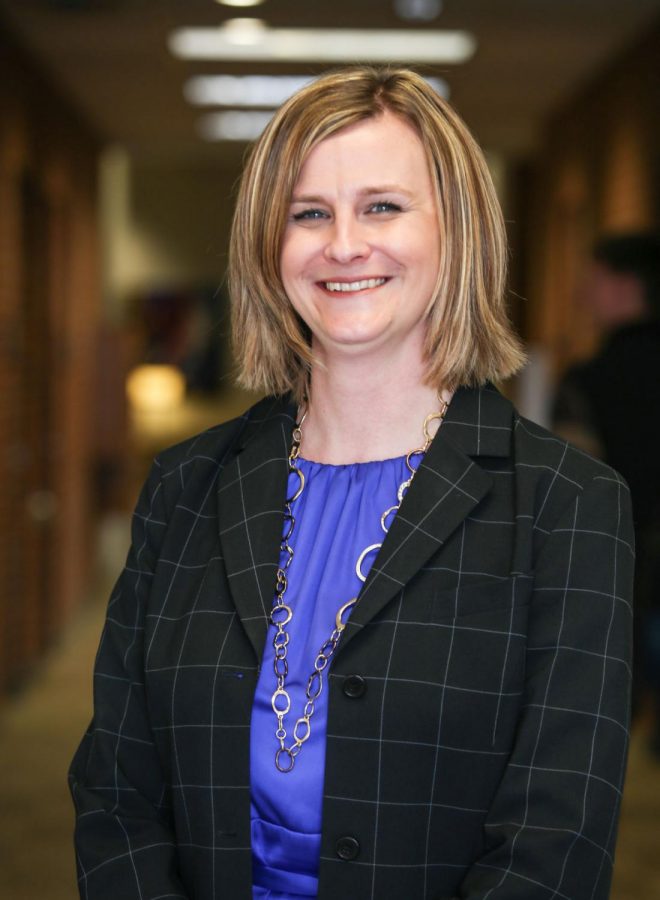Three candidates begin interviews for VP of Student Affairs
April 10, 2016
Last week three candidates interviewed for the vice president of student affairs position at South Dakota State University. They included Doug Wermedal, the SDSU interim vice president of student affairs, Michaela Willis, vice president for enrollment management and student affairs at Peru State College, and George McClellan, vice chancellor for student affairs and enrollment management at IPFW.
The vice president of student affairs reports to the president of the university and serves on the President’s Executive Leadership team.
This position is responsible for campus features such as residential life, dining services, student health and counseling, wellness center, admissions, enrollment management, financial aid, multicultural affairs, greek life, veterans affairs, american indian education and cultural center, TRIO programs, career development, disability services, recreational and intramural sports, student activities and involvement and student conduct.
Doug Wermedal
Doug Wermedal’s position as interim vice president of student affairs was only supposed to be temporary, but he believes it’s time to make this an official position.
What distinguishes Wermedal’s candidacy from the two other finalists for the position is his history and experience with South Dakota State University. Wermedal has served as interim vice president of student affairs since 2014 and received his undergraduate degree and doctorate degree at SDSU.
“You’re going to have a good leader here whether it’s me or one of the other two candidates … but you won’t find a more sincere and genuine advocate for this institution than who is standing up here,” Wermedal said.
Wermedal’s presentation and vision for student affairs focused on 14 principles, but Wermedal said the most important of his principles were to demonstrate the relevance of student affairs to the educational mission of the university, manage safety and security of students and model a work and life balance.
These three principles would be Wermedal’s focus if he got the permanent position then the other 11 would follow. Other principles include emphasizing diversity and inclusion, creating contemporary campus amenities and engaging parents.
As he waits to hear if he will continue his work in the office of Student Affairs, Wermedal said it is an emotional experience for him because of how close he is to the university.
“This vision is casted from the heart of how I know the institution has deeply benefited me,” he said.
Michaela Willis
Michaela Willis comes from a small university, but she has set her sight on the large campus of SDSU.
With 12,589 students, SDSU has more than 10,000 students more than Peru State College, where Willis currently serves as vice president for enrollment management and student affairs. She has served seven years in this position.
One area that is important to Willis is the vision of the university. If someone comes to her and wants to change something, she will ask how it ties in with the mission and how it will impact the student experience.
“Right in title is vice president for student affairs. I’m your advocate. I’m your voice on that administrative team. I want to make sure that I’m representing you well,” she said in a student forum.
Willis received her bachelor’s degree in business administration at Doane College. She also completed her master’s degree at Doane in management. Two years ago, she received her Ph.D. in educational studies.
Willis said one of her strengths is in listening. She wants to understand all of the context and all of the “pieces of the puzzle” before making a decision.
Communication was another area Willis finds important. She wants to communicate back and forth on what the students affairs office is doing and why they are doing it.
Willis stressed the importance of students and the position of student affairs. She reflected on her own experience and why she would be a good fit at SDSU.
“I really fell in love with the work that I was doing with students and that has been something that has continued to develop and so I feel very fortunate that I found my passion in higher education because I get to work with students like you every single day.”
George McClellan
George McClellan thinks the student affairs office at SDSU can serve the students better than how it is now.
After reading the office’s mission statement, McClellan thought there could be improvements.
In the student affairs mission statement, there isn’t much mention of student engagement, which concerned McClellan. He also thought there could be more collaboration and a strategic goal for learning and development.
McClellan thinks he can help SDSU achieve this.
In his past 30 years of experience in higher education, McClellan doesn’t “do ‘to’ or ‘for’ the students, but ‘with’” the students.” As current vice chancellor of student affairs and enrollment management at IPFW, he wants to bring his experience from that role to SDSU.
He specifically wants to focus on learning and development, multiculturalism and excellence.
McClellan considers himself a “critical multiculturalist.” He works with native and indigenous people from around the world and believes he can help build programs and services to promote multiculturalism at SDSU.
“I think all of us need to step forward to make a difference in this arena,” he said.
One principle belief of McClellan’s that will help him to achieve these three goals is his belief that the outcome is important, but so is the higher education experience.
“I support outcome measurement,” McClellan said, “but we’ve forgotten about the journey in higher education, and the journey is just as important as the end result.”

























